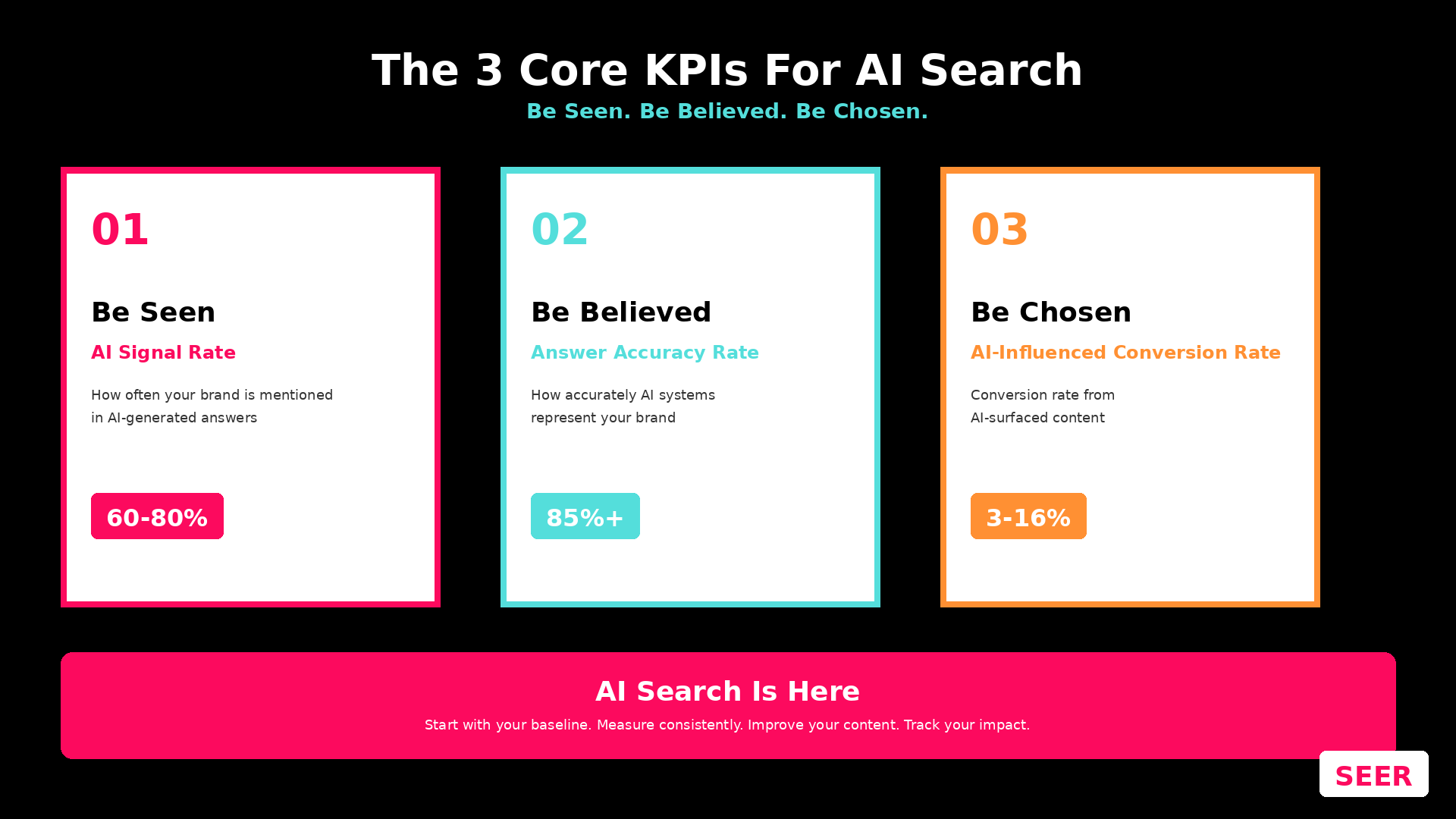Your Brain on Stories: How Leveraging Narrative Drives Action from Data
“Oh, the stories data would tell, if there were a teller to tell them well.”
- Nancy Duarte
As digital marketers, we have an ever increasing amount of data at our fingertips with insights ready to be uncovered. However, using those insights to inspire action in our senior executives and even other team members is not always easy. We spend hours crafting beautiful presentations full of charts and perfecting our speeches to have them buried in an internal network drive - never to be seen again.
Mastering the art and science of telling stories using data is one of the quickest ways to inspire action in others and turn our insights into impactful business results. This is because our brains are wired for storytelling. In fact, a study by anthropologists from University College London in 2017 found a real-life example of how nature has been selecting for storytelling in humans because it has given us a survival advantage. Stories told by our ancestors warned of danger, let us consider alternatives to situations and plan action (mental rehearsals), as well as helped us collaborate at scale.
After centuries of evolution, our brains are keenly tuned to narrative. Functional MRI scans show that when we hear stories told, different areas of our brain (prefrontal cortex and the amygdala) light up. These are not only areas of the brain where we process language but also emotion. In some cases, even areas of the brain that had to do with movement lit up - showing how story inspires physical action.
A phenomenon known as “neural-coupling”, coined by Uri Hasson, a professor of psychology and neuroscience at Princeton University, shows that when we’re engaged with a speaker our brains actually “sync up”. However, if the story isn’t engaging or we don’t fully understand what the speaker is trying to communicate this coupling disappears.
Engaging your audience through story is one of the best ways to drive action from your data. However, you need to ensure that your audience is engaged and understands the insights you are presenting and the action that is needed.
Know Your Audience
This first step to ensuring that your audience is engaged is knowing who your audience is. Your presentation needs to be crafted to the audience you are presenting to, and the data you are presenting also needs to resonate with the audience. Presenting to your CMO or other senior executives will be a very different presentation than one you might make to your internal team.
The first step to creating an impactful presentation is to identify the decision maker that will be in the room and what key metrics they are looking to influence. This will ensure that the data you are presenting will resonate with your audience, making them more likely to act on your findings.
Once you have identified your decision maker and the key metrics you will be presenting, it’s time to start crafting your narrative and presentation style. Below are 3 general buckets your audience will fall into and some general recommendations for presenting to each.
-
Presenting to Peers
When you need to convince your peers to act on some information you’ve found, it’s best to use the language of the group. This can include jargon, acronyms, and more advanced charts that you’d typically avoid for other audiences. Your peers are likely to already have developed this common language and already have the background context on why this recommendation is being made. Additionally, behavioral science has shown that we are herd creatures and like being a part of social groups. By demonstrating you are part of this group through shared language,, you are more likely to persuade your peers into acting on your recommendation.
-
Presenting to Managers
When presenting to managers, keep in mind that for them to act on your idea, you are asking them to become a sponsor of the idea. Managers elevate ideas throughout the organization and can bring together disparate groups for a worthwhile effort. However, they need to know this idea is worth pursuing and that you have all the data to back up your idea. Keep your recommendations clear and avoid jargon and other common language. Though you may share the same background, avoiding jargon and complex charts will give managers an easy way to distribute your ideas throughout the organization. Provide a detailed appendix in these presentations so the manager can dig into your data and make sure your ideas are sound.
-
Presenting to Executives
Executives are very busy and have to make a lot of critical decisions every day. In order to capture their attention and inspire action you need to create short, logical, data-backed presentations. Make sure the deck is easily skimmable and plan to only present for half of your allotted meeting time. Executives ask a lot of hard hitting questions, so be prepared for tough questions and interruptions.
[TIP] Tailor your communication style to the preferences of the executive to supercharge your presentation.
Create a Clear Structure
Our brains love stories, and stories typically follow certain structures that our brain has come to recognize. To better foster understanding among your audience, ensure your presentations are organized in a structural way that follows storytelling patterns
Craft a Data Point-of-View
A good place to begin crafting your structure is with your Data Point-of-View (POV). This is a concept from Nancy Duarte’s book “DataStory”, which is essentially your “Big idea”. Your DataPOV is one concise sentence that contains your unique point of view about what the data is telling you and the action that needs to be taken, as well as the stakes of not taking action.
- A good DataPOV would be something like:
“Reducing the number of form fields on our intake form would increase leads by 20%” - A bad DataPOV would look like:
“Reduce the number of form fields.”
The key difference between these two is that the good DataPOV contains the statistical outcome you want. Even better, make it a dollar amount. We could change the Good DataPOV to say that fixing the intake form would increase leads by 20%, or 1.3M of potential revenue”. See how much more impactful that is? Especially to executives who talk dollars all day.
Borrow Classic Writing Techniques
Stories have been passed down for generations for good reasons. Stories are how we connect, how we simulate experiences without having to personally go through them, and how we share knowledge. Take a page (pun intended) from traditional writing principles to set your presentation up for success.
There’s a reason why so many fairytales begin with “Once upon a time…” This simple story structure creates a clear hook, which is critical to getting an audience interested at the start and staying engaged until the end. Think about three elements as you craft your hook: context into the story’s world, the conflict at hand, and the reason for the audience to care.
To build your narrative, think about classic story frameworks to create structure for your audience to follow. There are a variety of different frameworks, but an easy one to start off with is the Three-Act Structure. Dating from Ancient Greece, the Three-Act Structure includes:
-
Act One - The Set-Up: This is when the world the story exists within is built, when the protagonist is introduced, and when the inciting action is revealed.
-
For a presentation, this may be where you set up the industry context around an analysis or the goal our client is looking to achieve.
-
Act Two - The Confrontation: Typically the longest part of the story, this is when the protagonist has to confront that solving their initial challenge isn’t going to be as straight-forward as they expected. This is where the rising action takes place.
-
In a presentation context, this could be the challenges that your company or users are facing that we can help them overcome.
-
Act Three - The Resolution: This is when the final climax takes place, the protagonist overcomes their challenge, and life following the culmination is revealed.
-
This is when your idea or recommendation is revealed that will solve the challenges uncovered in Act Two.
There are many different frameworks to choose from, but no matter which one you choose be sure it captures your audience’s attention from the beginning and logically presents your argument throughout.
Choose the Right Visualization
Choosing the right visualization to display your data is just as critical as any other element in data storytelling. This is because we are visual creatures and our brains are wired to start drawing conclusions within seconds based on an image, before our conscious brain even knows what’s going on. That’s why it’s so important to make sure your data visualizations are clear and an accurate representation of the data.
Choose Simple Charts
While we all love a good radar chart, typically the simpler chart is easier for people to quickly read and understand. More complex charts can be used for data exploration, but use simple charts when sharing data with others. Use bar charts when describing quantity, line charts for showing trends over time, and pie charts for measuring parts of a whole.
[TIP] If using a pie chart, only show 2 -3 slices MAX, 2 slices is ideal. This is because humans are terrible at understanding area visually, but better at comparisons. So, if you are calling out 1 slice compared to the whole pie, this is a lot easier for people to understand. Also, don’t think you can get around this rule by using a Donut chart - they are the same thing.
Annotate Charts
Use callouts or other annotations on your charts as an additional layer of information. This allows you to draw attention to the most important data element in the chart and provide further explanation to speed up understanding. There are a lot of different ways to annotate charts, here are just some of our favorites.
Add a label to one data point, such as calling out the total number a bar adds up too.
Highlight the most critical data piece of a chart by using a different color.
Use brackets to add up different parts of a whole chart. You could also use brackets to show differences between one piece of data or another.
There is a lot that goes into choosing the best data visualization for your data, but this is a good place to start. Some other things to keep in mind is taking advantage of white space and color to make your data standout from the rest of the content. You should also always ensure that your axes start at zero in order to not misrepresent the data.
Conclusion
Leveraging storytelling when presenting data is a powerful tool for driving action from insights. The human brain is wired for narratives, making it essential to craft a narrative that engages and resonates with the audience. Understanding the audience and using language and charts that resonate with them can make all the difference. The presentation structure should follow storytelling patterns, beginning with a Data Point-of-View that contains a clear and concise message. By combining data and storytelling, marketers can deliver powerful presentations that inspire action and drive business results.
Need help getting your analytical insights through to leadership? Need to revamp a report to make it more useful for stakeholders? We’ve got you covered! Reach out to get your Reporting Efficiency audit!
Want more posts like this? Subscribe to the Seer Newsletter:




